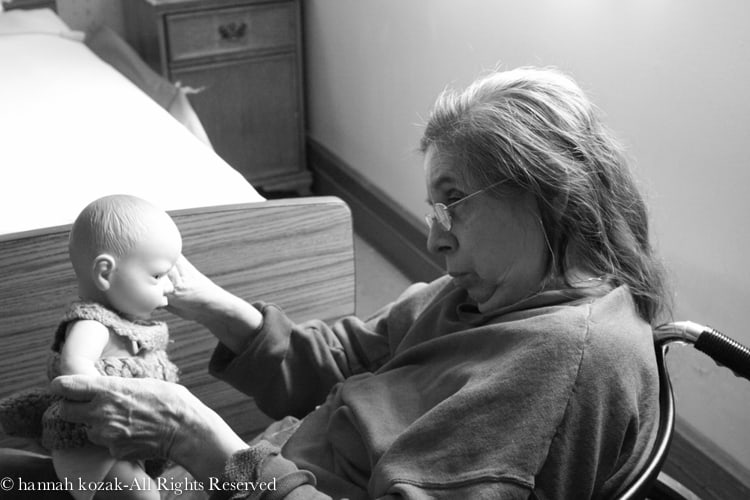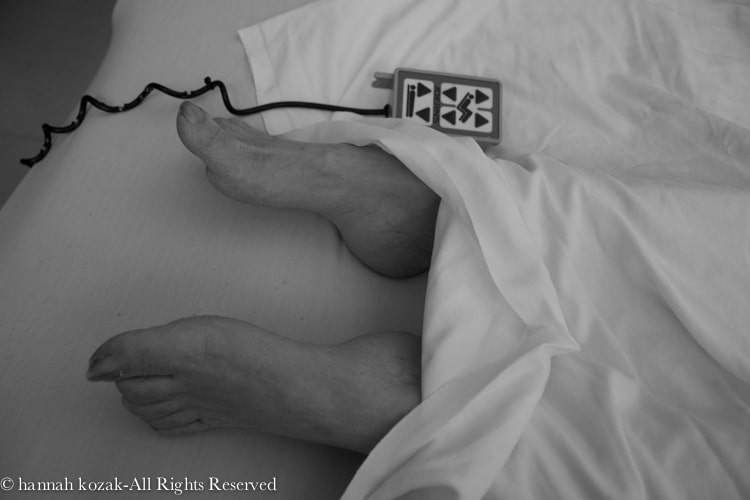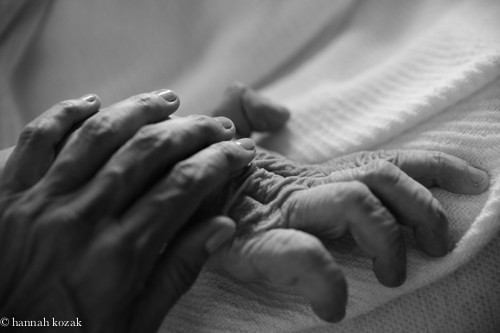Hannah Kozak was born to a Polish father and a Guatemalan mother in Los Angeles, CA. She worked as a stunt double for celebrated stars like Cher, Angelina Jolie, Lara Flynn Boyle and Isabella Rossellini. For nearly twenty-five years, Hannah’s work provided the opportunity to work with notable directors such as Michael Cimino, David Lynch, Mike Nichols, Tim Burton and Michael Bay. On every set, Hannah took her camera to work, capturing candid, behind-the-scene pictures that penetrated the illusion of Hollywood magic. Hannah has turned the camera on herself, her life and her world. She continues to look for those things that feel honest and real, using her camera as a means of exploring feelings and emotions. After decades of standing in for someone else, she now is in control of her destiny and vision. Photography has the power to heal and to help us through difficult periods, something Hannah Kozak knows first hand from personal experience.
Hannah, congratulations on first prize for the Julia Margaret Cameron Award 5th edition for Female Photographer of the Year and Julia Margaret 6th edition – 1st prize for documentary photo of your mother from “He Threw the Last Punch Too Hard”! I know that you are also one of the 12 finalists for the CDS/Honickman First Book Prize in Photography for 2014. I would like to start our talk from the question – when and under what circumstances have you started to take photographs? What does photography mean for you?
Thank you. I started making photos when I was ten years old. From a younger age, I always understood that everyone in my life would eventually die. I began to photograph all my family and friends at ten years old, almost as if I was storing my memories not only in my brain but also with my photos. I dated each photo and kept all negatives and prints in order of when I made the photos.
Death in the Western world is indeed hidden away. I have siblings who refer to this event as “The D word.” I have always been fascinated with the topic. You might say I was a bit obsessed with death. There are no stakes if we could go on forever.
Photography became a way for me to have a permanent record, something tangible, that I could hold onto in moments of loneliness or just missing someone.
Let us discuss your project “He Threw the Last Punch Too Hard”. I know the dramatic story((“When I was nine, my mother abandoned my family to have an affair. The man she left us for turned out to be violent; he beat her so badly that she suffered permanent brain damage and had to be moved into an assisted living facility where she still lives today; the longest living resident of thirty-three years. Of her five children, only my younger sister has visited her regularly over the years” (from the artist statement of Hannah Kozak).)) behind it from your artist statement. But I would like to know why did you start to take photos of her? Is it intentional auto-therapeutic photography?
I started to make photos of my mother during and after I graduated with my masters degree in spiritual psychology((Hannah Kozak studied spiritual psychology at University of Santa Monica.)). My mother left when I was nine years old. After watching her being abused for five years, she wound up in intensive care from a blow to her head by her second husband.
I went back to school in my late forties to study spiritual psychology. A dear friend of mine had completed the program so I knew the second year curriculum included healing a damaged relationship. My relationship project in school was my mother. I started to photograph my mother because I was trying to heal our broken relationship. My feelings were so overwhelming to me and my camera provided me a connection point and a separation I needed. In the early photos, there is a great disconnection between my mother and myself. As time went by we grew to actually know and love each other and the photos start to show those feelings. I enjoy our time together. She doesn’t nag me or tell me what I’m doing wrong, as I’ve seen in many mother-daughter relationships. She tells me how much joy I’ve brought her or how much she loves me or how pretty I am. My camera removed the barrier between my mother and me and enabled communication, finally, between us. Photography was and is a stabilizing anchor for me, my entire life.
I never planned to show these photographs when I was making them. It was not intentional auto-phototherapy but the process proved to be healing for both my mother and myself.
What is the most important for you when you shoot, if you would have to choose between composition and emotions, what would you choose?
There are so many elements that are important when I photograph. The light is of critical importance as is composition. What’s most important for me as a storyteller is telling the truth so I love the emotions my mother shows. Most people are self conscious when being photographed. My mother is so in the moment, there isn’t anything else for her but the present. I can’t choose between the technical aspects of photography including light and composition vs emotions. Lisette Model said we search for truth and sometimes find beauty. I agree with this.
My mother so honest, like a child, she doesn’t hide her real feelings like most adults have learned to do. In that sense, she’s a breath of fresh air to photograph. She knows I am doing something that is part of who I am and she lets me be who I am. I have shown her some of the photos and the book I have made. I am working on a self-published book of the same series and she likes to see what I’ve made of her. She understands how important she is to me and the photos, together in a book, express that clearly to her.
I saw your statement and understood the idea, but I would like to discuss it from another point of view and analyze the photos — sometimes something can reveal in pictures unconsciously. When I am looking at some photos from the project I have a feeling that they somewhat might be a kind of «revenge» for you. Have you ever thought about that? Taking pictures of her in these hard circumstances in order to have a kind of revenge for leaving you when you were a kid… I do not mean that you are making it deliberately, maybe just unconsciously… At some photos she seems to be very vulnerable, I guess, she wouldn’t like other people to look at her at those moments. That does not imply that it is the only reason or the main idea (be it conscious or unconscious), but I find it possible that there is something like that present in the project. What do you think?
No, revenge was never any part of my feelings. Revenge would be appropriate for someone angry, someone who wants to cause intentional pain. That’s not how I feel about my mother. By the time I graduated with my second degree, I had done a lot of inner work. I had forgiven myself for judging my mother as a bad person. I felt compassion for my mother, not revenge. Yes, she is vulnerable and I have asked her if it would help someone else to see my photos, would that be okay with her. What is present in my project is to show that anyone can be forgiven, no matter how much time has passed by and that truly the only person you have to forgive is yourself, for judging the person in the first place. My mother didn’t set out to hurt me, she fell in love with someone else. You can’t help whom you love. And I think my mother has suffered quite enough for her choices. It doesn’t help anyone to further judge her. I know she has judged herself quite harshly. She told me “everything was a mistake.” Who hasn’t made mistakes in their life? My mother continuously inspires me to live from the heart, not from the head. I think the truth is always better than clever fiction. I know my photos can be emotionally jarring. Art has the power to disturb, to make one feel & think. To drop masks, persona, falseness. That’s what Diane Arbus, Maurice Sendak did and I resonate with their art. Arbus went to the bottom of the night as Auden said of Yeats.
It is interesting, she looks helpless and naive like a child on these photos. Other people take care of her: there are a lot of touches, care, tenderness. And, at the same time, when I look at the photos, I start to remember that she abandoned her own children. Especially, the photos with a baby-doll reminds me about that. For me, there is more than just a particular unusual story about a relationship between your mother and you. It is also about the phenomenon of parentification (the process of role reversal whereby a child is obliged to act as parent to their own parent), isn’t it? Have you ever had this feeling — that she is a kind of your child now?
Oh, gosh, Yes, she is like a child in some ways, as I mentioned. She’s completely helpless. She has to have her diaper changed, her food prepared and fed to her. She has to be bathed, she can’t brush her teeth.
Oh, it surely is a role reversal. I’ve been trying to move her to a different facility for years, I make sure she is seen by her doctors. I’ve spent many evenings in the emergency hospital with her. I stop by late at night just to tell her I love her. She is a child in many ways. Now especially more than ever as she is aging, she seems more like a child than before. I surprise her with dolls quite a bit and the joy I see in her face when for example, I bring her a doll from Guatemala, is priceless. She hugs the dolls I bring her, she speaks to them as if they are her friends.
Have you ever seen the projects by other authors about their elderly parents? They are also about compassion, about love… But, in my point of view, your project is very special. In fact, other photographers shoot in order «to save» someone «disappearing», while you taking photos of someone who was already «died» for you for many years. Some other photographers would like to save, but you, somewhat opposite, try «to meet» or «to find» your mother via photography. To what extent do you agree with that?
Yes, I’ve seen Aline Smithson’s Arrangement in Green and Black, Phillip Toledanos’ Days with My Father, the portraits Richard Avedon made of his father’s last 7 years. I found that with each project, we are given entry into the lives of aging parents in a dignified manner. As someone who has photographed both my parents intensely for the past four – five years, I understand how aging and death affect us on a personal level and my parent’s aging journeys, has helped me understand my own mortality.
Yes, this is accurate. I didn’t know my mother when I began to photograph her. All I had were snippets of memories like her wearing a pretty, orange dress to my 2nd grade open house night and of course, memories of her being abused. I moved to Israel when I was 20, in part to remove myself from the difficulties of the emotions I had in regards to my mother. Photographing my mother helped us both. I was trying to find my mother, in that sense, it was deliberate. I feel now as if I’m trying to make up for lost time we had. I have photographed her obsessively for 5 years, I am working on publishing a photo book (my heart is in books as well as photography) and creating a short video project. I feel madness sometimes because of the demands I put on myself to complete this series.
How long are you going to continue this project?
Excellent question. I never tire of photographing my mother’s face. She’s a book I can read endlessly. I have memorized her face. I think I’ll know either when my intuition tells me, or I start to repeat photos or when either my mother or I take that last breath.
You told me that you hope that this project can help others who have struggled or are struggling with the emotional effects from loss and abuse. Could you please elaborate how could it help, in your opinion?
I’ve had photographers tell me that my photos have made them think about their relationship with either a mother or father that is damaged and even though they cannot forgive today, that they hope they can in the future. Isn’t this how the process of forgiveness begins? A seed is planted by seeing that it is possible to forgive, no matter what the injury. My mother’s ability to forgive is remarkable. In her shoes, many could be unforgiving, bitter and angry. She’s a rainbow of light.
I have to photograph my mother so someone is witness to her life. I’m deeply invested in being with my mother as much as possible. Perhaps my photos will make someone pause and question who they are.
I’m a lover of classic movies, of film noir. I’ll leave you with a favorite quote of mine from Intermezzo, an Ingrid Bergman, Leslie Howard 1939 film, a classic tale of romance where someone falls in love with someone else, someone they are not supposed to love, just like my mother did.
“We expect the people we love to behave like gods.
But then we realize, we’re none of us gods.
We’re all human, tragically human.
You may understand this one day and
When you do, you may understand what it is to forgive.”
“Intermezzo”
Interview by Natalya Reznik
Images of Elderly People in Contemporary Documentary Projects
September 5, 2013
Хитросплетение богемы и бизнеса (Paris Photo 2011)
November 30, 2011
2 Comments
Comments are closed.
























This is so beautiful and touching. Really glad that we are friends on FB. Wishing you the very best with everything you do.
Thank you Hannah. I’m praying for your mom. And I’m praying for you as well. You’re an amazing artist in the work that you’ve done in your life. I admire you. You have a beautiful gift.
Sending love,
Bonnie